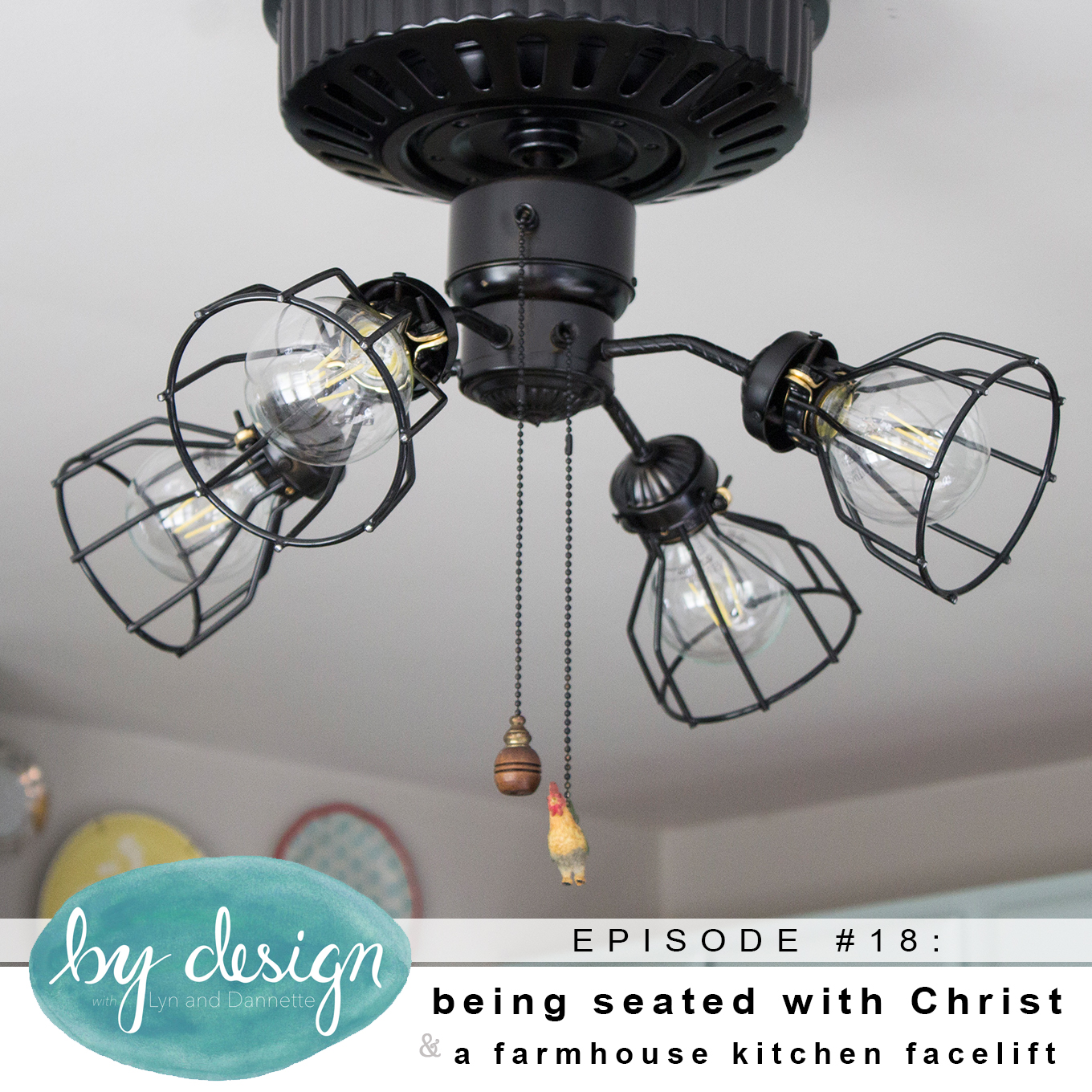We’re continuing with our Kitchen Reno Series and today we talk about COUNTERTOPS. Lyndsye shares more about her kitchen reno and why they chose the counters they did. We talk about all the options, types and some of the pros and cons.
Thanks so much for listening!
xo,
Lyn & Dannette
•••
LINKS & THINGS
{by design} pinterest board: https://www.pinterest.com/bydesignpodcast
TYPES OF COUNTERTOPS:
- Plastic Laminate: Made of layers of resin and kraft paper and has a decorative layer of pattern or color sandwiched within. It’s topped off with a clear melamine resin on top for protection.
- Pros: Inexpensive for one. And they have lots of new options out now that look like concrete, wood, quartz, etc. So you can achieve the look you want for much less money. They’ve also come a long way with durability and some manufacturers have specialty finishes for extra protection.
- Cons: Has a particle board core, so the color and material isn’t solid all the way thru like solid surface or quartz. It’s also more likely to warp in wet areas over time, doesn’t take to heat so you can’t sit hot pots or dishes without the risk of damage (unless your a risk taker like Dannette!). You’re also not supposed to cut on it because you could scratch thru the wear layer. I have heard you can use furniture wax or laminate fillers to help hide the scratches if you do get some, but there is no way to buff it out or make it go away completely.
- Popular Brands: Wilsonart, Formica, Pionite, Nevamar, Lamin-Art (one of Dannette’s favs, even have some laminates made of recycled content like jute and banana fibers…very cool)
- Solid Surface: It’s made from a proprietary blend of natural minerals bonded with quality acrylic, the result is a durable surface that is easy to clean.
- Pros: Easy to clean. It’s also nonporous so it won’t absorb bacteria or water, which puts it a step above the wear-ability of laminate. It’s also somewhat resistant to staining.
- Cons: It can scratch and stain, and you have to buff it out. This is a pro and a con in my opinion. It’s a lot of work to get it out sometimes, but at least you CAN.
- Granite/Natural Stone:
- Pros: It’s timeless. Natural stones just can’t go out of style in our opinion. Granite is also a very hard stone, so it’s not prone to scratching like laminate or solid surface. It’s also heat resistant, so it’s great around your stove and you can sit hot pots and dishes on it without problem. It’s also relatively low maintenance, not needing much as far as upkeep. It’s all a thru-body products, so it’s completely granite top to bottom.
- Cons: Large veining, can be busy. Needs to be resealed every year. It may not look like it needs to be sealed, but it’s a porous product, so over time it will absorb bacteria. Ew! And it will also start to absorb stains like wine, juice or oil if the sealant wears off and those are the types of stains you cannot remove. Be sure to pay attention to the finish you are purchasing as well. Whether honed or polished. A honed finish is more matte and porous and will need to be resealed more often, like every few months.
- Concrete: Basically just a bag of concrete, built in a form and installed. They can be pricey to have installed by a contractor, but if you’ve ever done any concrete work, you might be able to pull it off yourself. The finishing and perfecting of the top would probably be the biggest concern.
- Pros: Very beautiful and durable. Concrete is heat and scratch resistant.
- Cons: Concrete is susceptible to stains. It needs to be re-sealed every couple years.
- Quartz: (what Lyn selected for kitchen reno) Engineered product that mixes around 95 percent ground natural quartz with 5 percent polymer resins.
- Pros: Since it’s engineered and not a completely natural stone product, you get a wider variety of colors and options, and more control over the pattern, unlike granite. It’s as durable as concrete and granite and resistant to scratching. It’s also not as heat resistant as granite, so you might want to be careful with hot pots. Since quartz is non-porous it’s also very resistant to stains. We’ve heard some stories of it staining here recently, so our suggestion would be to try to keep it wiped up if you’ve selected a white color for your counters.
- Cons: It’s a little pricier. Not as heat resistant, so you’ll want to be a cautious with what you set on it.
- Lyn’s color: White Zen by Cosmos
- Tricks of the trade: Use a ceramic cleaner for Stovetop cleaner and it will take off stains.
- Recycled Glass Countertops: Made of crushed glass so it’s an eco-friendly product. The glass is encased in resin or concrete usually.
- Pros: It’s very durable, especially the resin ones. And also resistant to impact, staining, UV rays, scratches and heat.
- Cons: Can be expensive and has a more contemporary look. Harsh cleaners and acidic foods can mar the surface, depending on the resin used. If the body content is concrete, you’ll need to make sure it’s properly sealed so it won’t stain.
- Butcher Block: Edge grain butcher block tops have parallel wood rails that run the length of the piece. End grain butcher block tops are created by fusing together the end pieces of wood rails into a checkerboard pattern. End grain is considered the stronger and more durable style of the two.
- Pros: It’s beautiful. Hands down. And it’s naturally anti-bacterial, strong and durable. Not as expensive as natural stone or quartz. One other thing that is great about wood like this is that it can be sanded down and refinished if ever starts showing too much wear.
- Cons: If the surface isn’t consistently treated with mineral oil or other protectant, damage can occur is water sits on the countertop too long or seeps into seams. So you have to stay on top of oiling it.
- Maintenance: Avoid harsh detergents, chemicals, and puddles of standing water. You can sand out light scratches, dents and dings with a high grit sandpaper. Recondition or oil when wood gets dull or shows signs of cracking or aging.
{ you can listen here or thru the player below ↓↓↓ }
Podcast: Play in new window | Download
Subscribe: Apple Podcasts | Google Podcasts | Email
New episodes every Tuesday!
All you have to do is SUBSCRIBE and automatically get new episodes on your podcast app! To subscribe:
- iphone/iTunes users, just click here
- Android users, click here to subscribe (and listen using podcast app like Podcast Addict or Podbean)
FOLLOW us on social media for weekly updates! Instagram // Facebook
And we would love it if you would comment or share this episode or our podcast!


